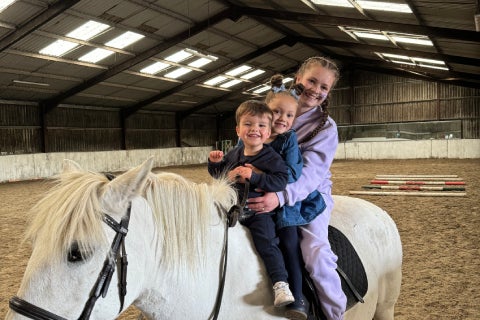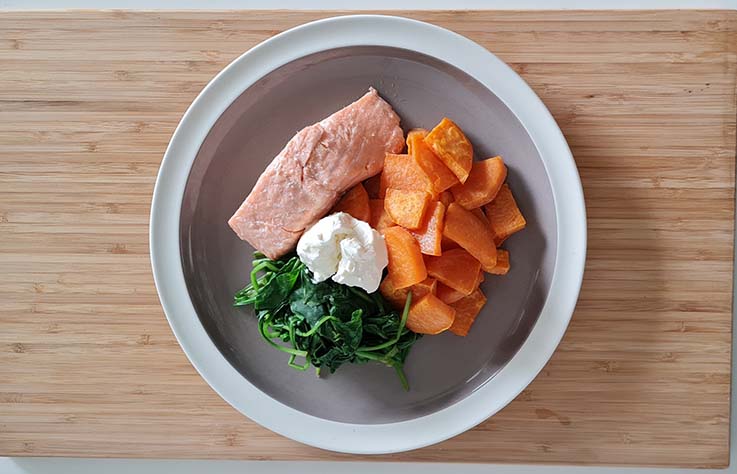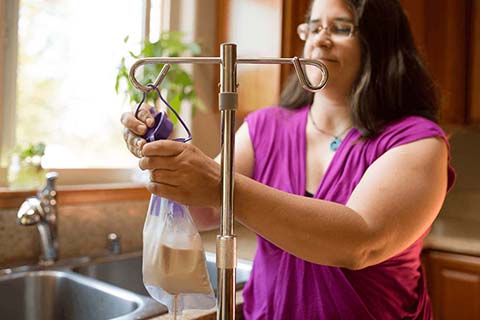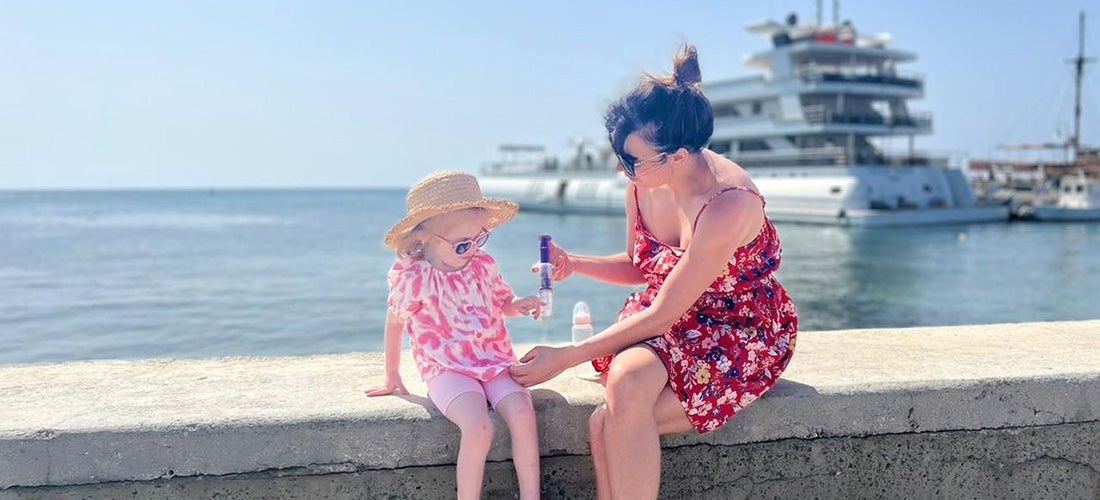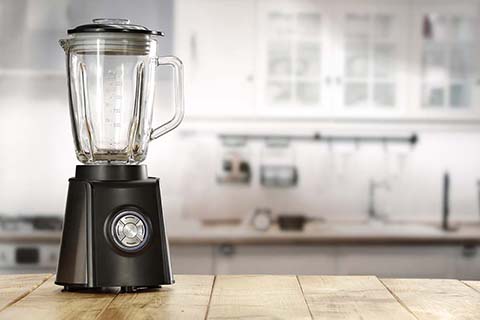Lorenza & Eliza: Let’s talk about blended diets
Lorenza shares a personal reflection on her daughter, Eliza’s, blended diet journey.
This article shares Lorenza and Eliza’s experience of tube feeding under their individual care plan given by a healthcare professional. Please don’t change a care plan without speaking to a dietitian. All views expressed belong to Lorenza and Eliza, and do not necessarily reflect those of Talking Tube Feeding.
So, let’s talk blended diets.
Most children with a G Tube (gastrostomy tube), NG Tube (nasogastric feeding tube) or a J Tube (Jejunostomy tube) are fed milk-based liquid feeds which have been researched and formulated to be nutritionally complete. I feel like tube feeding has always been a part of my life and I often feel like an expert but, in reality, it has only been 6 years and I am continuing to learn.
Eliza was born with a rare genetic syndrome called CHARGE Syndrome. It is an extremely complex syndrome, involving extensive medical and physical difficulties that differs from child to child. Shortly after birth, an NG tube was placed which was the start of our feeding journey. Even though we were so grateful to have a method of feeding, Eliza’s NG tube came with some challenges. Feeds were extremely time consuming; we had no sooner finished a feed and we were preparing for the next. Reflux and vomiting were a huge problem around this time and we were unable to control this no matter what medication we tried.
Eliza is a very strong-willed girl and as a baby that was no different. Numerous times a day she pulled her tube out and we would have to go through the trauma of repassing. It was in these early stages of our feeding journey that I started to consider a blended diet. I had heard a lot about blended diets.
My main motivation and focus was to improve Eliza’s immune system and lower the number of infections which required antibiotics, as supported by Eliza’s HCP.
But where to start?
I questioned if we were at the right stage in our journey to start and whether the efforts outweighed the benefits. Early discussions with health care professionals discouraged us moving over to a blended diet because there wasn’t much research or evidence for them to be able to support us moving over to a blended diet at the time.
Moving over to the G Tube
At around 18 months old we then made the decision to move over to a G Tube. This removed some of the challenges we faced with Eliza’s NG-Tube but still we battled with constipation, reflux and a low immune system, confirmed by her GP. Over the years I started to hear more and see more parents of tube fed children moving over to a blended diet and I was still intrigued.
After a long run of illnesses for Eliza, which resulted in a 3-week hospital stay, I met a dietitian to discuss blended diets. Returning home from this hospital stay was the start of our blended diet journey. I revisited the discussion with Eliza’s healthcare team and they were very supportive of the discussion to try introducing food into her diet.
I was nervous and apprehensive to commit to moving straight over, so I first started with adding homemade juices to Eliza’s diet in addition to her tube feed, treating it as an added extra. My favourite juice recipe was beetroot, carrot and apple. Around this time, I joined the Talking Tube Feeding community. Through the website and social media I have met other parents who were already blending and had been doing so for many years, as well as medical professionals with a lot of knowledge around blended diets.
I have gained so many tips which gave me the confidence to try one meal per day blended. Again, I approached Eliza’s medical team and with their support and advice I started to blend these meals. I have found the recipes on the Talking Tube Feeding website very helpful and most weeks we blend the creamy salmon with spinach and sweet potato.
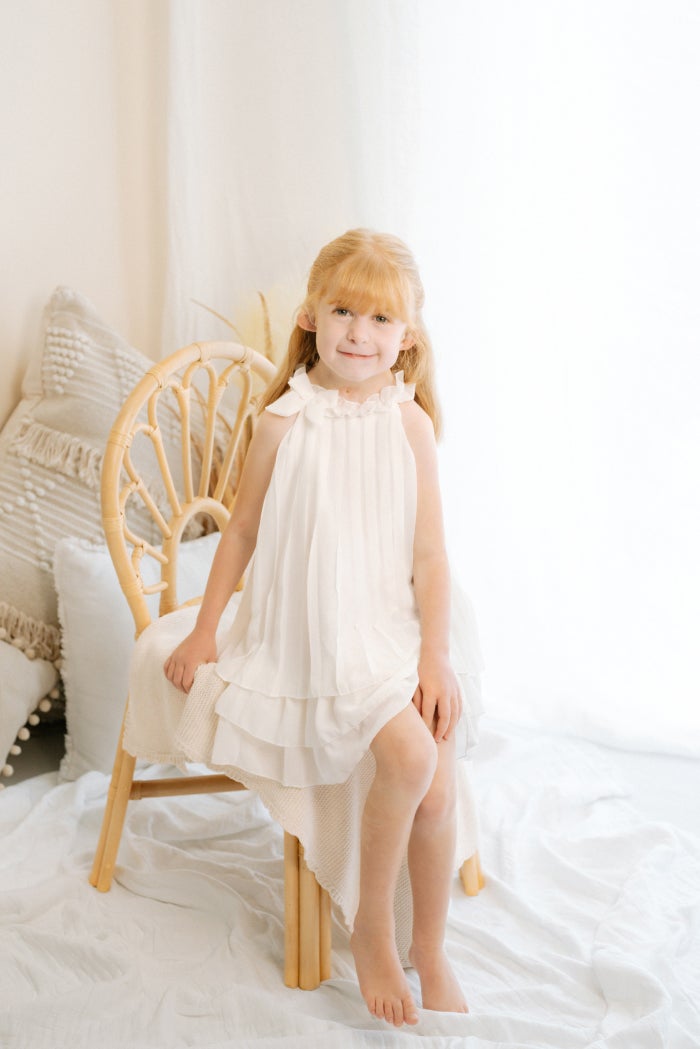
What made me finally commit and move over to a blended diet?
In December 2022, Eliza went for a routine video fluoroscopy appointment to assess her swallowing ability. I went into this appointment excited assuming we would be getting the go ahead to keep progressing with her oral intake. However, it was during this appointment I was given the devastating news that Eliza was aspirating on all consistencies and from that moment for the first time in 6 years we had to go NIL by mouth. Having to stop oral feeding gave me the motivation I needed to focus on a blended diet.
I always encourage Eliza to be a part of choosing what we blend and helping prepare these meals. She has such a positive relationship with food and enjoys being a part of the process. She is always curious to know what blend we are feeding her. It is a great way for me to still include her around food.
My advice to other parents wanting to try a blended diet would be to always start by speaking to your child’s health care professional. Do your research, I recommend looking at the Talking Tube Feeding website, speak to other parents already using a blended diet. It can be a big commitment to move over to a blended diet it’s worth being prepared before making the switch. It’s easy to feel some pressure to do blended diets as some parents can make it seem very easy, however, every journey is different and you should always explore what works best for your family.
So, you may be thinking why I would make more work for myself by planning recipes and blending meals, surely tube feed is easier? Yes, it is easier, however, I moved over for the benefits which we are seeing with Eliza. Her weight gain has been on a steady increase and her constipation has reduced – and the way Eliza tolerates blended meals has freed up so much more time for us, which is one benefit I wasn’t expecting but has been a game changer for us.
I wish I had taken the leap sooner! Good luck to anyone reading this and deciding to speak to their healthcare professional about blended diets.


